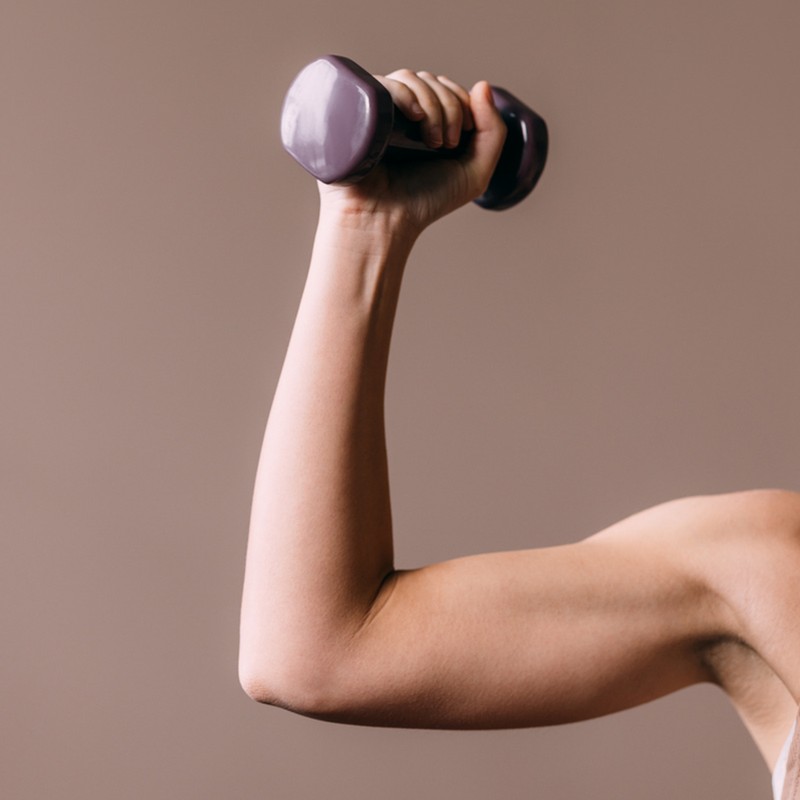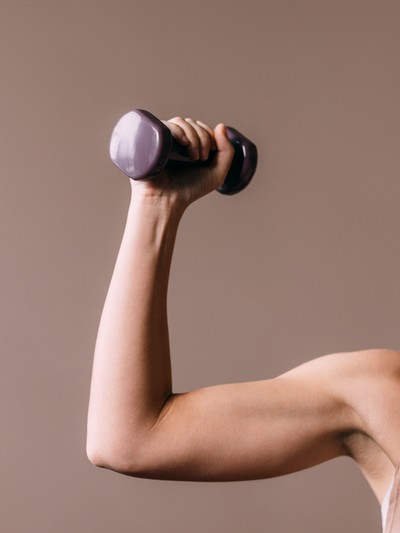

How To Start Lifting Weights Later In Life
Know The Benefits
“There was a time when the only people in the weights area of the gym were men, but weightlifting has gone mainstream in recent years, with countless studies showing its benefits for everyone, irrespective of age. The main benefit of weight training – which, by the way, is the same as strength or resistance training and can mean anything from using resistance bands to lifting handheld weights – is that it builds a stronger body, the benefits of which are endless. Regular strength training will enhance metabolism; increase energy levels to make you feel more alert and focused throughout the day; improve bone density and reduce the risk of osteoporosis; improve your quality of sleep; promote optimal hormonal balance; and make it easier to perform daily tasks. There’s no form of exercise more effective than lifting weights, especially later in life.” – Claire Finlay, owner of Transition Zone
Lift Weights To Get In Shape
“For years, we believed endless cardio was the only way to burn body fat, but science now suggests this is outdated. In fact, strength training is far more effective for fat loss. Strength training builds lean muscle mass, which increases your metabolic rate and turns your body into a calorie-burning machine, even at rest. This makes it an effective way to lose fat and get in shape.” – Claire
Understand That It Won’t Make You Bulky
“One of the biggest misconceptions about strength training is that it will make you look like Arnold Schwarzenegger. This is not the case for women – in fact, if only building muscle were that easy. The truth is it’ll likely take years to build muscle whilst eating in a way to support muscle growth. Your genes play a role, too. Don’t be scared to get strong as it won’t happen overnight, and you will never be bulky. If anything, weight training will make you look leaner and feel healthier and stronger.” – Mimi Bines, co-founder of Lift Studio London
Start Small
“Don’t run before you can walk. Aim for at least two full-body sessions per week, which studies show is the optimum amount to stress each muscle group to see progress. Start with the minimal effective dose and, as you build strength, add in another session or increase the weights you’re using. Start by ensuring you’re using every muscle group in a workout – aim for a squat, a hinge (such as a hip thrust), a push (like a shoulder press), a pull (try a row), and then a core exercise like a plank for a full-body hit. Aim for eight to ten reps for each – the final rep should feel like a challenge. Use this to dictate the level of dumbbell of kettlebell you use.” – Lily Chapman, performance coach and sports nutritionist at P3RFORM
Get More Bang For Your Buck
“When it comes to resistance training, some moves are more effective than others. Compound exercises involve multiple joints, and thus a larger number of muscle groups. Isolation exercises, on the other hand, only use one joint. Compare a deadlift and a hamstring curl, for example. Both exercises target your hamstrings, although a deadlift also uses the glutes, back, shoulders, forearms and your core. During your session, all of these muscles require increased blood flow to deliver glucose, oxygen and other nutrients to your muscles, so your heart rate will increase to match these demands. In short, compound moves give you more bang for your buck. Do more goblet squats, kettlebell deadlifts, split squats, press-ups and planks.” – Ollie Thompson, personal trainer
Go Heavier For Your Lower Body
“Unsure how heavy to go with your kettlebells? The most important consideration is good, safe form, so think about what weight will keep your body challenged while performing a move with good form. As a rule of thumb, start with eight to 12 reps and three to four sets of each move, going heavier for your lower body, which tends to be stronger than the upper body. Test a few different weights to find your sweet spot. When starting out, take one to two rest days between sessions as your body adapts.” – Lily
Master Your Breathing
“Weight training isn’t about achieving a high heart rate or burning as many calories as possible. In fact, it pays to slow down and think about your breathing to ensure you’re engaging the right muscles and perfecting your form. Keeping the breath under control is an overlooked aspect of weight training. Inhale through your nose as you lower the weight and then exhale through your mouth when you press the weight.” – Ollie
Remember To Incorporate Mobility
“As much as you want to keep the body challenged, it’s important to keep the body supple and flexible, too. Ending every weights session with some gentle stretching or yoga will bring your body back down to baseline levels – it’ll gently lower your heart rate to resting levels, increase blood flow to the muscles and flush out toxins from your session. Foam rolling is fantastic – it has been shown to reduce muscle soreness. Try alternating your sessions between strength and mobility to keep you strong and reduce your risk of injury.” – Lily
Include Protein At Every Meal
“When you lift weights, you create tiny tears in your muscles, which require protein to heal. If you lift weights but don’t eat enough protein, you won’t recover properly and won’t see results. Aim for a consistent intake of protein throughout the day – around 20-25g per meal is adequate. Don’t cut out carbs, either, but consider swapping white carbs for wholegrains, fruits and vegetables.” – Lily
Be Patient
“Slow and steady wins the race when it comes to building strength. Two consistent sessions per week is a great place to start. Train well, and regularly, and paired with nutrition, rest and recovery, you should see results within six weeks. However, depending on your starting point, it can take up to 12 weeks to see tangible results. Keep going – the results will come. Train with a friend or join a class for motivation.” – Lily
Be Consistent – But Don’t Go Overboard
“Lifting weights may seem intimidating, but it’s not as scary as it looks. The most important thing to remember is to keep the body challenged – lifting weights should feel challenging. Lifting tins of beans isn’t enough – you need to lift fairly heavy weights to strengthen your muscles. Strength training is about building a strong, healthy body and being fit for life. Aim for consistency – you’ll see better results from two or three consistent sessions per week rather than trying to cram in five sessions in one week, followed by one the following week.” – Ollie
For more from the experts, visit P3RFORM.co.uk, WellToLead.com, LiftStudioLondon.com and TransitionZone.co.uk
DISCLAIMER: We endeavour to always credit the correct original source of every image we use. If you think a credit may be incorrect, please contact us at info@sheerluxe.com.

